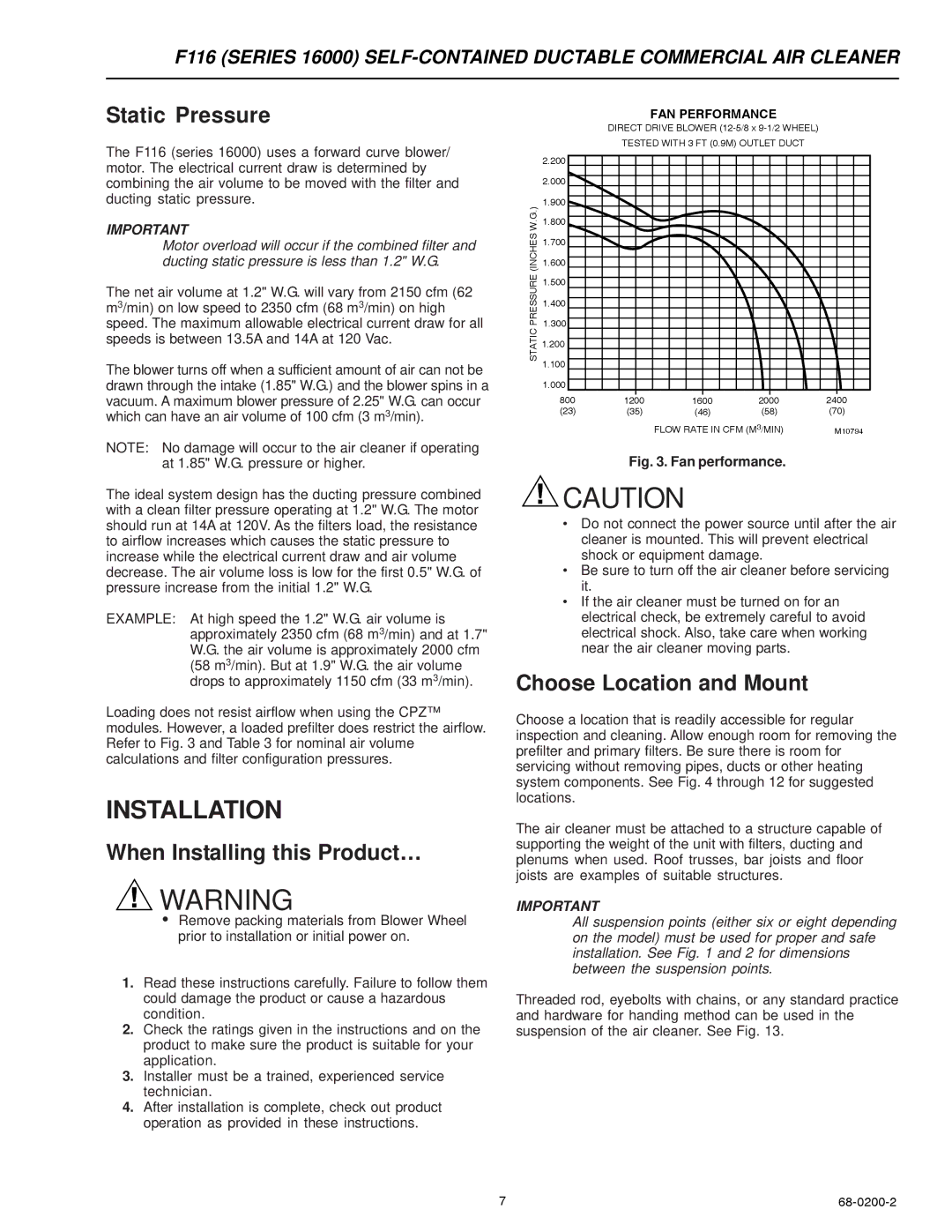F116 specifications
The Honeywell F116 is a cutting-edge avionics system designed for use in various aircraft platforms. This advanced flight control system leverages state-of-the-art technology to enhance situational awareness, improve safety, and optimize operational performance for pilots and crew.One of the main features of the Honeywell F116 is its Integrated Electronic Flight Instrument System (EFIS). This system provides pilots with essential flight data in a clear and concise format, integrating various flight parameters such as altitude, speed, and heading. The EFIS displays this information on high-resolution color screens, allowing for easy readability and reducing pilot workload.
Another significant characteristic of the F116 is its advanced flight management system (FMS). The FMS is designed to streamline navigation and flight planning, using sophisticated algorithms to determine the most efficient flight paths. This capability not only enhances fuel efficiency but also ensures compliance with air traffic regulations, allowing for smoother operations in busy airspace.
The F116 is equipped with Honeywell’s advanced Automatic Dependent Surveillance-Broadcast (ADS-B) technology. This feature significantly improves situational awareness by allowing aircraft to automatically broadcast their position to air traffic controllers and other nearby aircraft. This real-time data sharing is crucial for collision avoidance and enhances overall air traffic safety.
The system also incorporates Honeywell’s SmartRunway technology, which provides pilots with real-time alerts regarding runway conditions, helping to prevent runway incursions and ensuring a safe landing environment. This feature is invaluable, especially in adverse weather conditions where visibility may be compromised.
Furthermore, the Honeywell F116 is designed with robust redundancy features. In critical systems like avionics, having backup components is essential to ensure reliability and safety during flight. The F116 architecture allows for seamless transitions between primary and backup systems, thus minimizing the risk of system failure.
In addition to its technological advancements, the Honeywell F116 is also user-friendly. The system is designed to facilitate easy upgrades, allowing operators to take advantage of technological advancements without extensive retrofitting. This flexibility is a significant advantage for both new aircraft and those seeking upgrades for existing platforms.
In summary, the Honeywell F116 represents a vital innovation in aviation technology. With its integrated avionics, advanced safety features, and commitment to enhancing pilot efficiency, it stands out as a leading solution for modern aviation needs. The continual development of such systems drives the aerospace industry toward greater safety, efficiency, and reliability.

